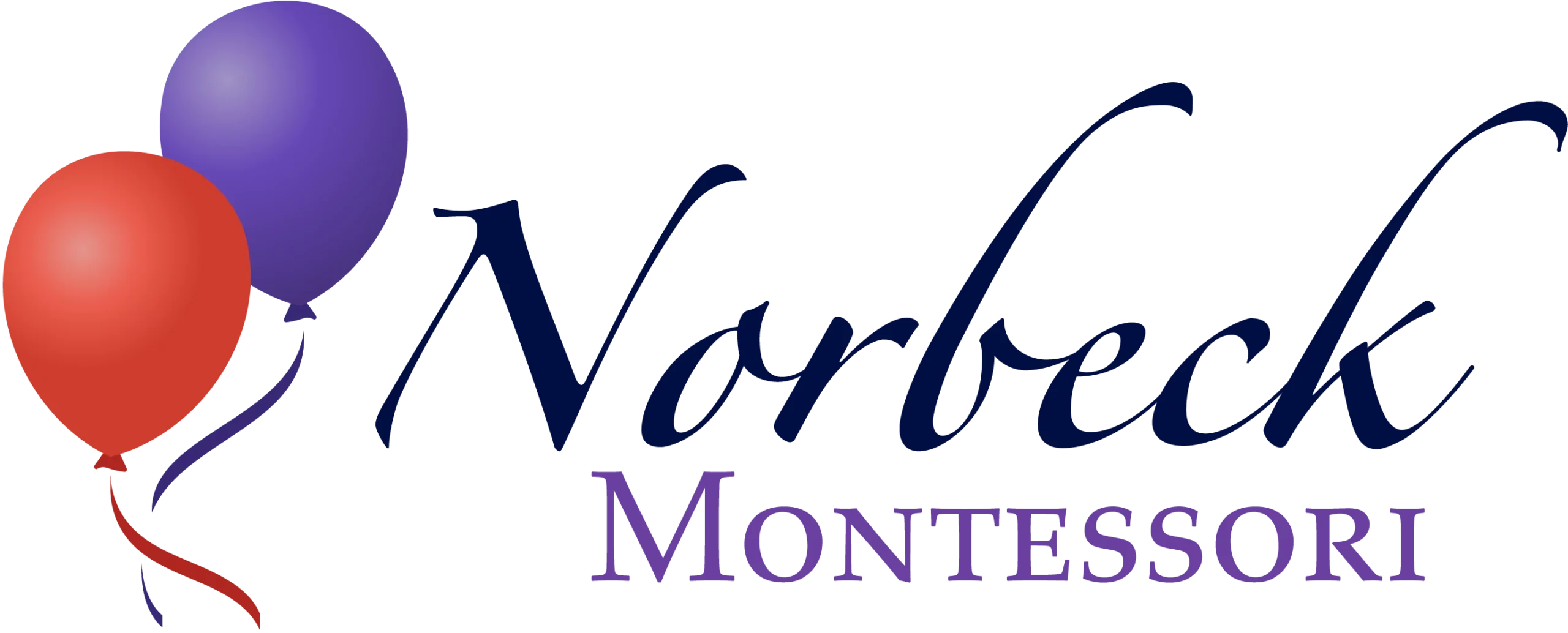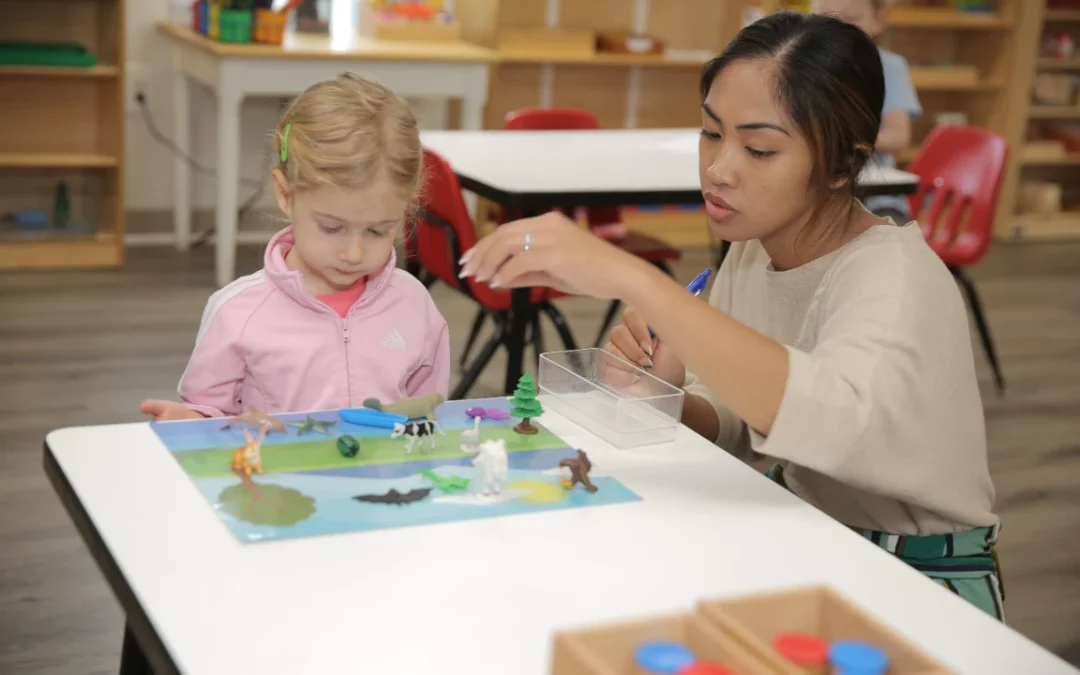We are always looking for information that may be helpful to our parents and we came across this article that we thought would be a good share. It does an excellent job of explaining the Montessori approach to toys and recommends ways they can be integrated into the play environment. We hope you enjoy!
Must Toys Be “Educational”?
“I never teach my pupils; I only attempt to provide the conditions in which they can learn.” —Albert Einstein
Many of us have seen a young child more interested in the wrapping paper than the gift; or watched as a child played with just a string and a popsicle stick or a large empty box. Maria Montessori observed the same phenomenon at her first job as a doctor in an Italian asylum; the children had no toys, so they played with the crumbs under the dinner table.
Today stores are filled with toys to attract the eye of children and adults alike. Many promise parents that the toy is educational. Some include instructions for adults on how to expand the learning. What do our children need? How do we know what is best?
The simple answer is that children don’t need elaborate playthings. They learn from whatever is in their environment.
Observing young children carefully, Maria Montessori gave us a deeper understanding of how children learn. Applying some of these basic principles will help you choose appropriate toys for your children.
Select the Beautiful, Natural, and Long Lasting
What are the activities your child needs and will enjoy? What will be used frequently, beyond the initial fascination?
Choose toys, tools, and other everyday items that are a good fit for your child both physically and developmentally. Look for attractive and well-made toys. For example, smooth wooden blocks are preferable to light plastic ones. “Children respond to the beauty of wood, glass, silver, brass, and similar natural materials.”
Take your cue from the Montessori classroom and arrange these enticing items on low shelves so your child can choose what to do. Limit the number of toys, and switch them from time to time. Too many choices are distracting for the young child. With open shelves, there is no frantic search for the last puzzle piece in the bottom of the loaded toy box! A selection of only a few books on the shelf or in a basket keeps the child interested.
Choose real child-sized items so that children can imitate what mom or dad do. A child-sized rake or hammer makes for success, as does the small pitcher to pour milk. Why invest in a toy kitchen or workshop when what the child truly wants is to build or cook something real?
Take Time and Give Them Time
Take the time to show your young child how to use what is available on the shelf. For example, take the blocks to the floor and build a road or tower; or dip the brush in the paint and then make a mark on the paper.
Show children how to care for their toys, returning each one to the shelf before getting another. A young child has a natural sense of order and thrives on the security of knowing where things belong and where he can find them. At first, you may need to remind or assist the two-year-old in doing this – but if you are consistent, it will become habitual.
If independent play is new for your child, she might seem bored or demand your attention at first. It is tempting to interrupt during this time to educate or tell her how to play. Resist the temptation! Watch as she makes her own choices and discoveries – even if she is not concentrating for long on any one activity. Devote a substantial period of time for your child’s independent play. For example, schedule an hour or more while you work at your desk or prepare dinner. Ideally, there is a play area nearby so she can be close to you.
Provide the Basics
Young children learn by moving. As easy as it is to have your child quietly engrossed in front of a screen, remember that learning happens best with active, not passive, participation. Children under three should not be exposed to screens for any period of time. Battery-operated toys that talk and move take the fun out of your child’s hands. It’s better to push the truck along the make-believe road, making honking sounds, parking, loading, and delivering. With toys that encourage imagination and problem-solving, children will provide their own “bells and whistles.”
Children need toys for large and small muscle development. Most of a child’s growth happens naturally. The first priority is to make sure the environment is safe for exploration and activity. Then provide simple items for the child:
- to build with – blocks, empty boxes or nesting cups.
- to push and fetch – a truck, wheelbarrow, push toy, ball.
- to sort and pour – varied dried beans to sort, or a pan of rice with scoops and spoons.
- to manipulate – simple puzzles, a jack-in-the-box, paper and fat washable crayons.
Excerpt from Montessori Services website

